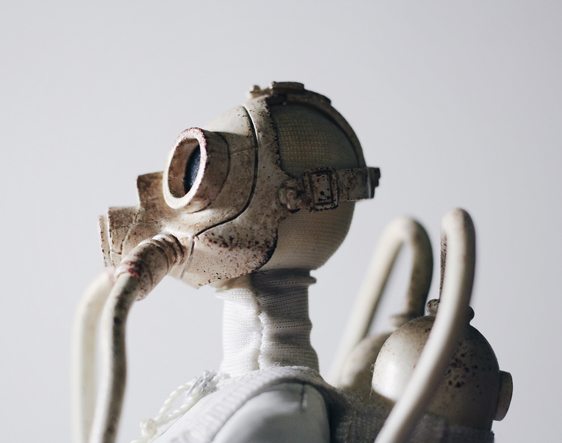There is a robotic revolution occurring in the healthcare sector that will prove crucial in an age of austerity, ageing and expanding populations, and medical staff shortages. Contributor by Jeremy Russell, CEO of surgical robotic experts – OR Productivity.
With its once sky-high cost, the economics of advanced medical technology did not allow for fast integration into our cash-strapped hospitals, but with gradually-declining running costs and healthcare leaders searching for new means of efficiency, we can expect to see more and more robotic systems in our hospitals.
In fact, if you experience surgery in the future, chances are that your surgeon will be accompanied by a robotic assistant. With pinpoint precision, remarkable Artificial Intelligence (A.I.) and advanced algorithms, the presence of a robot will make your operation safer, faster and more hygienic.
By providing surgical and other assistance to hospitals, medical robotics are already bringing down the cost of healthcare, eliminating human error, streamlining operating theatres, reducing operating time, and, crucially, freeing-up staff for more pressing matters.
However, the uptake of such technology must be accelerated. Should current trends continue, the global needs-based shortage of health-care workers is projected to be still more than 14 million in 2030, according to World Health Organization estimates.
But thought leaders like Dr. Bertalan Mesko, PhD, founder of the Medical Futurist website believe that technology will be the key to such challenges. Mesko predicts that methods of automation – such as A.I. robotics and 3D printing – will help to make healthcare sustainable and remarkably efficient in the future.
In England alone, recent research showed that NHS hospitals could undertake 17 per cent (280,000) more non-emergency operating procedures every year with better-organised operating theatre schedules. The research, which analysed 2016 data collected from operating theatres in 100 NHS Trusts in England revealed that more than two hours a day are wasted on average.
This suggests that operating theatres are significantly underutilised, with each procedure becoming costlier as a result. So how fast will the medical sector embrace these technologies? And, what might they look like? Mechanical medical assistants, of course, do already exist, and in many different incarnations. For example, UWE Bristol researchers at the Bristol Robotics Laboratory (BRL) , a collaboration between the University of the West of England and the University of Bristol are creating new robotic tools and devices to be used semi-automatically under the supervision of surgeons during invasive medical procedures.
BRL’s Dr Sanja Dogramadzi, who researches the use of robotic technologies to repair complex joint fractures, believes these tools have the potential to aid orthopaedic, abdominal and cardiovascular surgery. “By using minimally invasive access to organs and tissues, robotic tools can help to reduce trauma, speed up recovery and minimise costs.” she said. In her field, small robotic tools can be used to perform closed-joint reduction “with minimal invasion”.
This alternative to the current open-joint surgery used to treat these types of fractures avoids the increased risk of infections and tissue failures, which can be a major risk with such invasive surgery. On a larger scale, Google is now working with Johnson and Johnson’s medical device company, Ethicon to develop A.I. surgical robots to assist surgeons during invasive operations. The tech giant, which will provide the software, believes it can use the machine vision and image analysis it has developed for self-driving cars and other ventures.
The partnership will seek to use advanced imaging and sensors to assist surgeons by highlighting blood vessels, nerve cells, tumour margins or other important structures that could be hard to discern in tissue by eye or on a screen, the Guardian reported. The technology will also incorporate augmented reality to combine the numerous feeds of information currently spread across multiple monitors.
Other existing robotic alternatives such as the Da Vinci Surgical System use a magnified 3D high-definition vision system with tiny flexible instruments far more maneuverable than the human hand. This system eases and enhances a surgeon’s ability to operate safely and efficiently, yet has been limited in its use by high running costs.
OR Productivity’s FreeHand system holds and manipulates laparoscopes and cameras during keyhole surgical procedures, and provides a rock-steady image. It also eliminates the need for at least one camera-holding medical assistant, and in-turn brings down the procedural costs.
FreeHand is in talks with partners to combine expertise and build a full low-cost robotic system for laparoscopic surgery – bringing a technological revolution into our hospitals. This revolution will be brought about with both standalone products, and also by enabling much more expensive products, such as cameras and surgical robotic systems, to deliver their full potential benefits to patients. Robotic and technological systems will provide safer and faster operations to benefit both patients and surgeons, as well as lower costs for health service providers.
For patients in particular, this will bring a greater peace of mind due to the reduced risk of human error in healthcare, as well as faster recovery times and even smaller surgical scars. So, will robots replace doctors? Not yet. We are nowhere near seeing surgeons made redundant by robots. However, rapid advancements in technology repeatedly remind us to rule-out no possibilities.
Market projections appear to predict that robotic surgery is winning the economic argument. The Surgical Robotics Market was evaluated at $3bn in 2014, and is expected to double to $6bn by 2020, according to Allied Market Research. And due to a growing demand for minimally invasive procedures, the global market for laparoscopic devices alone is projected to reach $12.3bn by 2024.
So as robotics – in all sectors – become more and more advanced, we may well need mass-retraining of workers and/or the life raft of a citizen’s income, and as Joshua M. Brown, the influential New York City financial advisor predicts, the simple answer is to invest in the very technology driving these radical changes: “Just own the damn robots”, he believes, is the solution.









